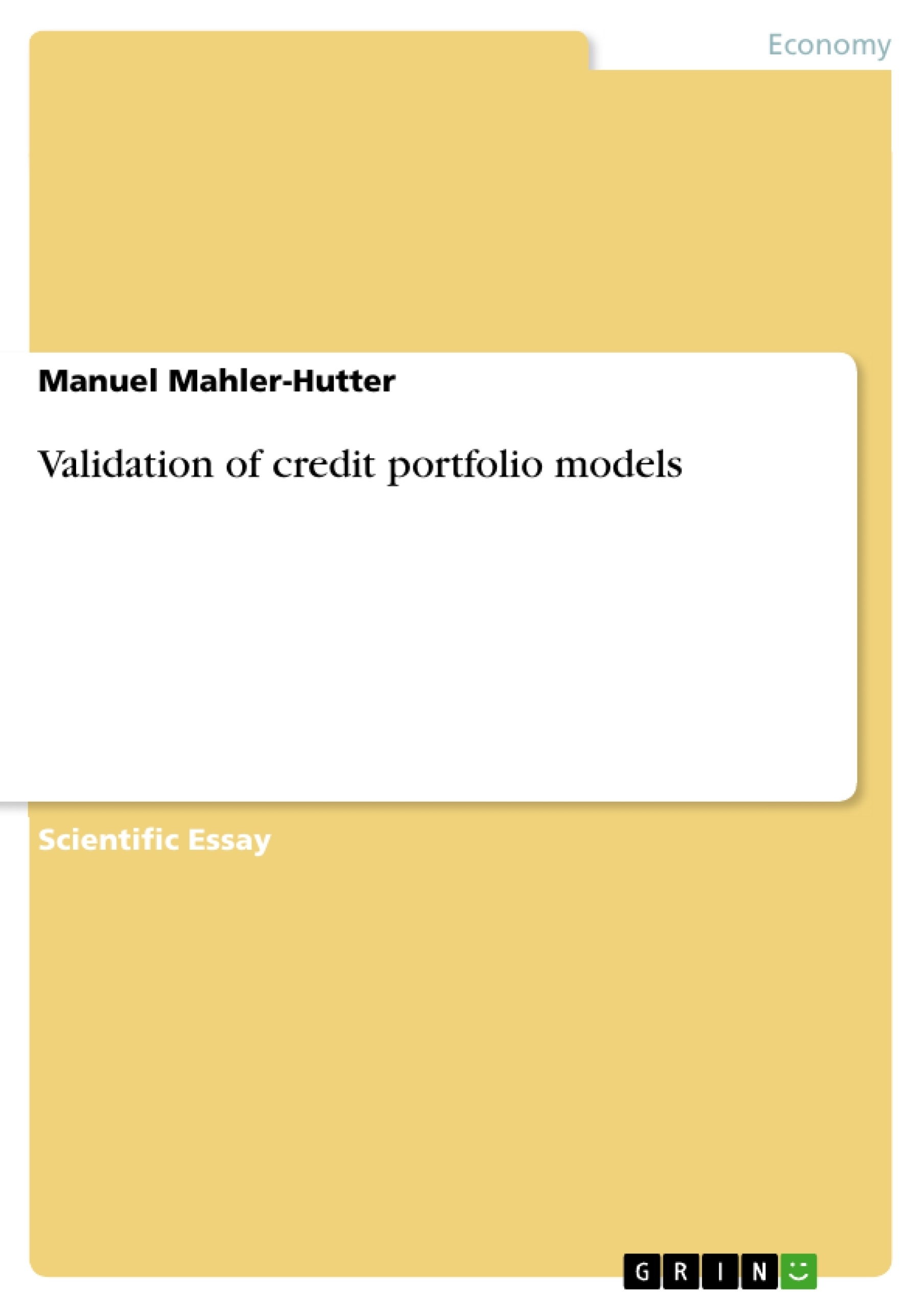Portfolio credit risk models give a probability distribution for portfolio credit losses. Validation of the model
includes testing whether observed losses were consistent with the model’s predictions. The main focus when
testing credit portfolio models is on the “high loss” end of the distribution, which, assuming normal distribution,
means “low probability”. Normally one or five percent Value at risk is used, which means that a given loss within
specified time will be observed with a probability of one or five percent respectively.
“A risk manager has two jobs: make people take more risk the 99% of the time it is safe to do so, and survive
the other 1% of the time. Value at risk is the boarder.”1
Inhaltsverzeichnis (Table of Contents)
- INTRODUCTION
- TESTING DISTRIBUTIONS WITH THE “BERKOWITZ TEST”
- IMPLEMENTATION OF THE BERKOWITZ TEST TO EXCEL
- SIMULATING THE CRITICAL CHI-SQUARED VALUE
Zielsetzung und Themenschwerpunkte (Objectives and Key Themes)
This document discusses the validation of portfolio credit risk models, specifically focusing on the “high loss” end of the distribution. The goal is to assess the consistency of the model's predictions with observed losses, particularly over longer time horizons where direct comparison is challenging.
- Model validation for portfolio credit risk
- Testing consistency between model predictions and observed losses
- Addressing limitations of short-term model validation methods
- The Berkowitz test for evaluating the entire loss distribution
- Simulation techniques for determining critical chi-squared values
Zusammenfassung der Kapitel (Chapter Summaries)
- INTRODUCTION: Introduces the concept of portfolio credit risk models and their validation. Highlights the importance of testing the “high loss” end of the distribution, using Value at Risk (VaR) as a common measure. Discusses the challenge of validating models over longer time horizons due to the infrequent occurrence of extreme losses.
- TESTING DISTRIBUTIONS WITH THE “BERKOWITZ TEST”: Presents the Berkowitz test as a method for evaluating the entire loss distribution and its consistency with observed losses. Explains the two transformations involved: replacing losses with their predicted probabilities and then applying the inverse cumulative standard normal distribution function. This process aims to create a normally distributed set of data that can be tested for zero mean and unit variance.
- IMPLEMENTATION OF THE BERKOWITZ TEST TO EXCEL: Provides a step-by-step guide to implementing the Berkowitz test in Excel. Explains the formulas used for calculating the maximum likelihood estimates of mean and variance, as well as the likelihood ratio statistic. Illustrates the calculations through a table-based example.
- SIMULATING THE CRITICAL CHI-SQUARED VALUE: Discusses the importance of simulating critical chi-squared values for more robust testing. Describes the algorithm used for simulating a distribution of the test statistic and the formula for calculating the threshold level for rejecting the hypothesis. Provides an example of how to interpret the results.
Schlüsselwörter (Keywords)
Portfolio credit risk models, model validation, loss distribution, Berkowitz test, Value at Risk (VaR), maximum likelihood estimation, likelihood ratio test, chi-squared distribution, simulation, statistical significance, hypothesis testing.
- Quote paper
- Manuel Mahler-Hutter (Author), 2008, Validation of credit portfolio models, Munich, GRIN Verlag, https://www.grin.com/document/153552



